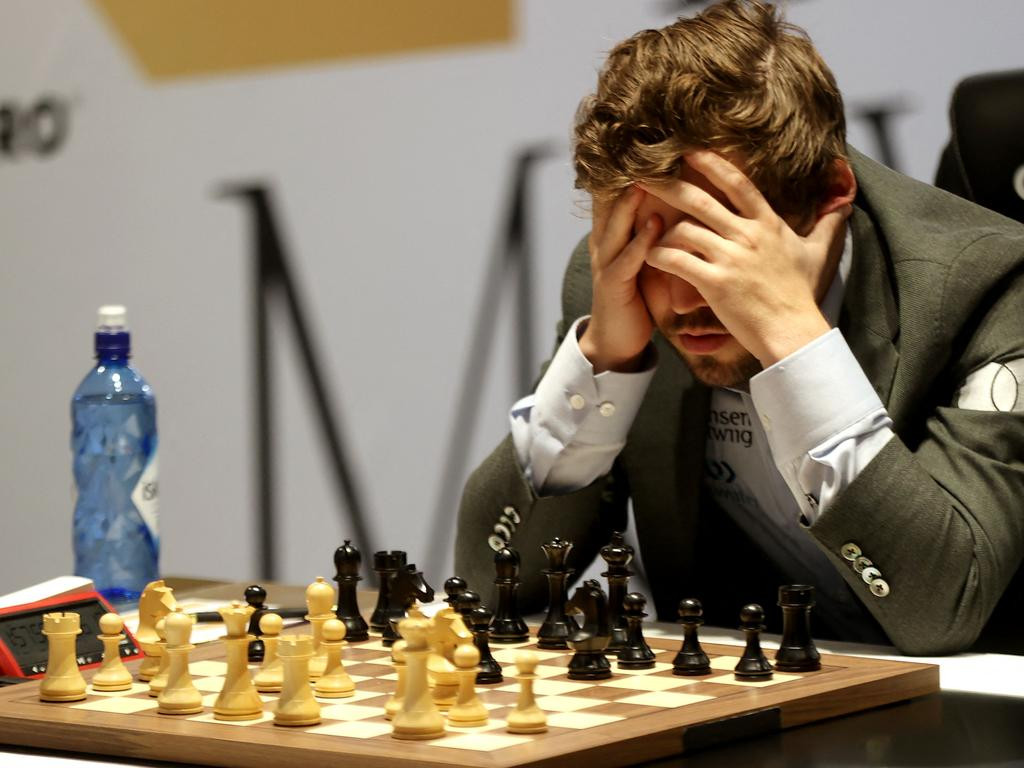Chess World Champion Magnus Carlsen Quits Tournament Over Jeans Dress Code Dispute
World chess number one Magnus Carlsen has quit a major tournament after being told he could not carry on playing while wearing jeans. The chess great had been defending his titles at the Fide World Rapid and Blitz Chess Championships in New York when officials made the request. The grandmaster, known for his maverick style, said he had offered to change his trousers for the next day, but was fined and told he needed to change immediately. This unexpected turn of events has sparked a heated debate within the chess community and beyond.
The Dress Code Controversy and Carlsen's Reaction
The incident unfolded during the Fide World Rapid and Blitz Chess Championships. Carlsen, a five-time World Chess Champion and current world number one, arrived at the tournament wearing a shirt, blazer, dark jeans, and dress shoes. He played a few rounds before being approached by officials regarding his attire. The International Chess Federation (FIDE) stated that its dress code regulations were designed to "ensure fairness and professionalism for all participants." Carlsen was fined $200 (£159) for violating the dress code and given the ultimatum to change immediately or face disqualification. He was not ready to make the immediate change as he had just come from a lunch meeting. He offered to change for the following day, but this was refused, leading Carlsen to withdraw from the tournament, stating that it then "became a bit of a matter of principle for me." He added that he wouldn't be appealing the decision, saying: "Honestly, I am too old at this point to care too much." The incident has brought the FIDE dress code under scrutiny, sparking discussion over its practicality and relevance in the modern era.
FIDE's Stance and the Application of Rules
FIDE confirmed the fine and stated that its rules are applied "impartially." They cited a case where another player was fined on the same day before changing his shoes. This instance highlights FIDE's commitment to upholding its dress code across the board, irrespective of the player's reputation. The chess federation's stance underscores the importance of maintaining a standardized level of professionalism throughout the event. However, this decision has also drawn criticism. Many feel that the rule is outdated and unnecessarily strict, especially for a player of Carlsen's stature. They argue that a more flexible dress code would foster a more inclusive and relaxed atmosphere within the chess community.
Carlsen's Legacy and Recent Controversies
Carlsen's decision to withdraw from the championship highlights his long-standing image as a maverick in the chess world. His meteoric rise to grandmaster status at age 13 cemented his position as a prodigious talent. However, recent years have also seen him embroiled in controversies. Last year, he settled a long-running legal dispute after accusing a rival of cheating in a tournament. This ongoing disagreement with opponent Hans Niemann has further fueled the narrative of Carlsen as a player who isn't afraid to challenge the established norms. The current jeans incident further solidifies this perception. In the midst of this controversy, 18-year-old Gukesh Dommaraju became the youngest world champion, a testament to the evolving landscape of the chess world.
Analysis of the Situation and Future Implications
The situation surrounding Carlsen's disqualification serves as a significant case study in the tension between tradition and modernity within the chess world. While FIDE emphasizes the importance of adhering to its established guidelines, critics argue that the strict dress code is outdated and counterproductive. The debate raises broader questions about the role of dress codes in professional sports, particularly those in which personal expression plays a significant role. Carlsen's actions demonstrate his commitment to his values and highlight his willingness to challenge authority. The incident may lead to necessary changes in FIDE's policies. The incident also shows the complex interplay between athleticism, professionalism, and personal expression in the sport of chess. The incident underscores the need for more flexible and adaptable regulations in the future, balancing the need for professionalism with the allowance for individual expression.
The Aftermath and What's Next
Carlsen’s withdrawal has sent ripples throughout the chess world, sparking intense debate about the appropriateness of the dress code and the power dynamics at play. Many commentators have sided with Carlsen, criticizing FIDE's rigidity. Others, however, defend the organization's right to maintain its dress code as a matter of upholding professionalism and ensuring a fair playing field for all competitors. Regardless of one's stance, it’s clear that the incident has highlighted long-standing tensions between the governing body and some of the sport’s most prominent figures. The long-term implications for the relationship between FIDE and top players, particularly Carlsen, remain to be seen. However, the incident has undoubtedly generated a renewed focus on the need for clearer communication and a more adaptable approach to regulations within the world of competitive chess. The debate sparked by this event is likely to continue, prompting a much-needed conversation about the evolution of norms and standards in professional chess. There are three chess grandmasters in south west who remain at the top of their game. The future of the game holds many possibilities.


















